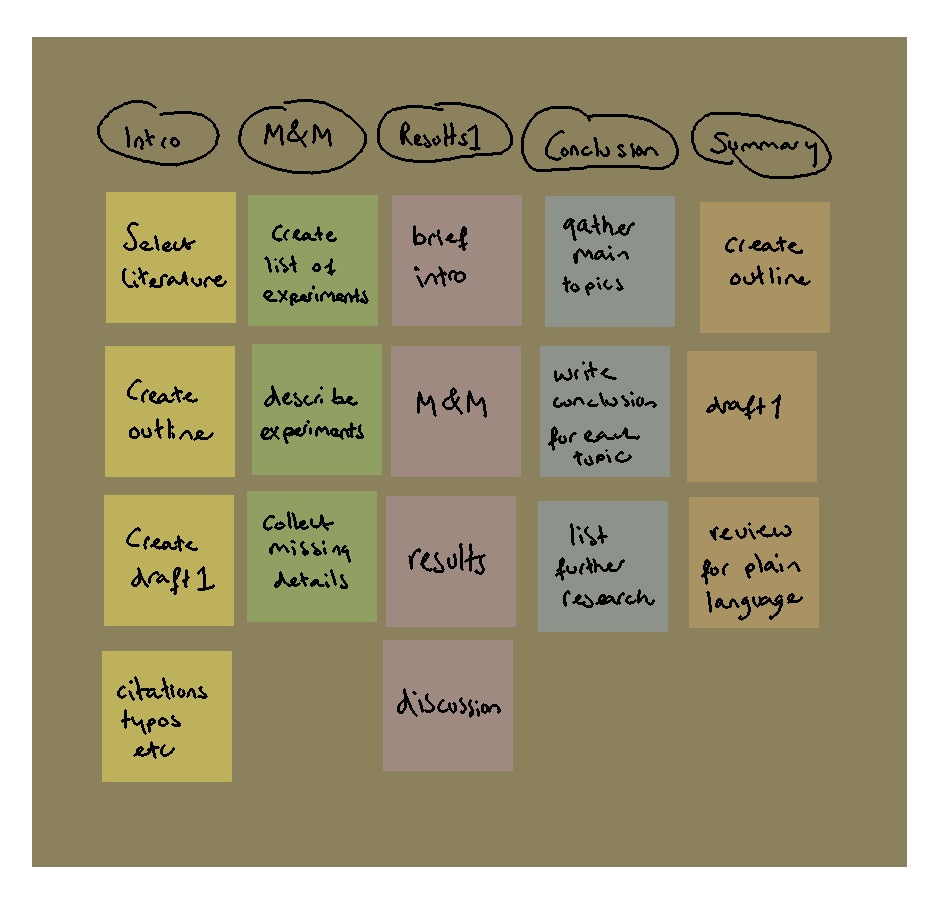When faced with a seemingly big task, you may feel overwhelmed. You will probably ask yourself: Where do I start? How will I ever get this done in time? I think this is totally normal and not necessarily bad. This is only a bad situation if it prevents you from making a start.
PhD research has so far been my biggest task to complete. Of course, PhD research consists of many, many smaller tasks, but in the end, you still need to deliver what is basically a book. You could see it as a big leap from ‘I have nothing’ to ‘I need to have written this amazing dissertation’ despite having already done most of the PhD, which by the time you will probably start writing full-time consists of having gathered all your data and done most or all of the analyses. How do you go from ‘nothing’ to a dissertation spanning years’ worth of research? The answer is: planning!
As with any larger task, planning is the way to ensure you do things in the right order and it can help you identify problems before they occur. Moreover, planning can help prevent wasting time going on a tangent writing stuff that ends up getting scrapped. Planning is also the way to help you see manageable chucks of work instead of this gigantic thing that needs to get done. Additionally, when you have a plan, it is easier to set deadlines to complete the project on time. So, here’s how I planned the writing of my PhD dissertation.
I first put some brown packing paper on one of my wardrobes to form a square of about 70 cm x 70 cm (that’s 27.6” x 27.6” for those of you who prefer measurements according to body parts, or 11 x 11 ear lengths). I did this because sticky notes stick better to paper than to my wall or cupboard.
I then created what is essentially a table with the chapter titles as column headings: introduction, materials and methods, results chapter 1, results chapter 2 etc, conclusion, summary. Underneath each one of these headings I stuck sticky notes with on each either a part of the process to create said chapter or one section of the chapter. I organised these in a vertical manner (see figure below).
As an example, writing the introduction can consist of the following steps: selecting relevant literature, creating an outline, creating a first draft, creating a second draft, and sorting out the citations/typos etc. In this case, you work on each step in sequence.
For the results chapters, I wrote down the different parts for each chapter: brief introduction, materials and methods, results, discussion. Because work on these parts was not always dependent on the other parts of the same chapter, I did not have to start with the introduction section and work my way down the list for that chapter, but instead I could start with the materials and methods or results.
As with the results chapters, I did not have to start with the introduction chapter of my dissertation but I could start selecting results for each results chapter and then work on the introduction chapter after having done most of the work on the results chapters, if I wanted. You will find that you can work on several parts of your dissertation simultaneously, which is good because you will want to change ‘scenery’ every now and again.
If you invest time in planning your writing, you will know what the next step is when you have completed one of the subtasks, so you may be less likely to freeze up and not know what to do. A plan also helps to keep you on track to meet the deadline.
In my case, once I had completed a task, I removed that sticky note from my writing plan. This made me see progress as it happened and helped me feel confident I was on my way to having a dissertation. This doesn’t mean I didn’t panic at times or that I didn’t have days where I really struggled to make progress. PhD is not supposed to be easy and not everyone enjoys writing, but planning can make your writing more efficient and help you feel less overwhelmed.
